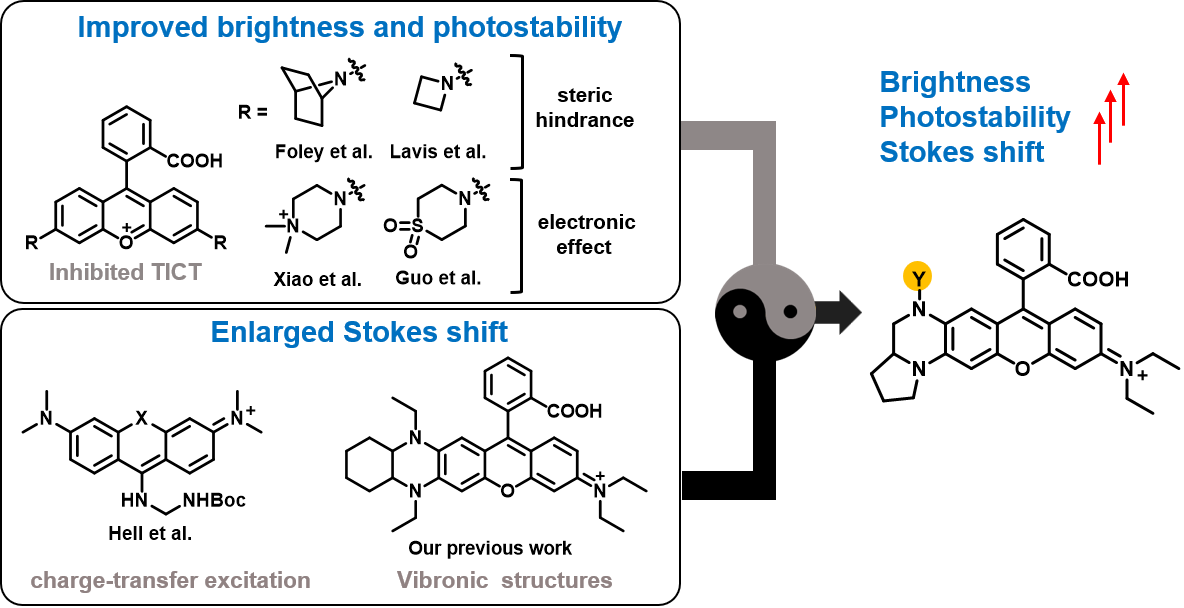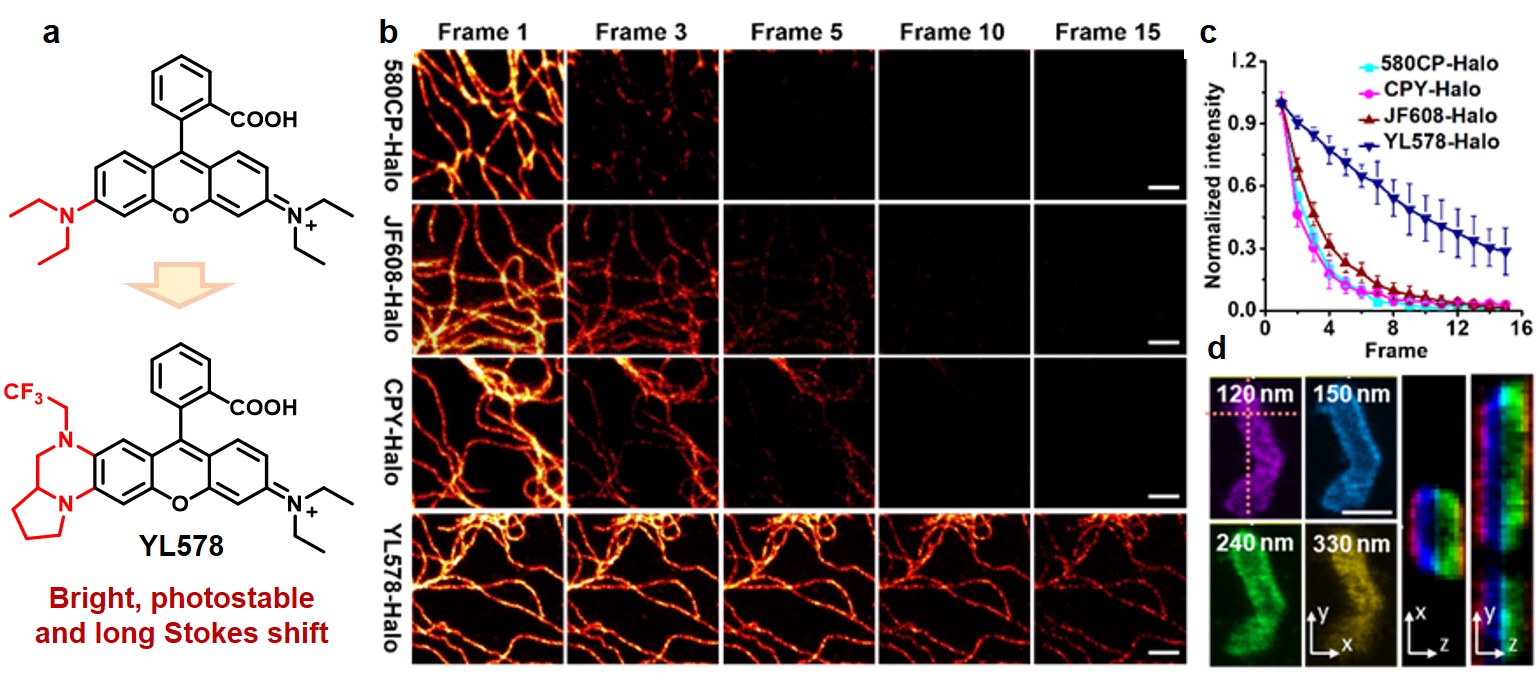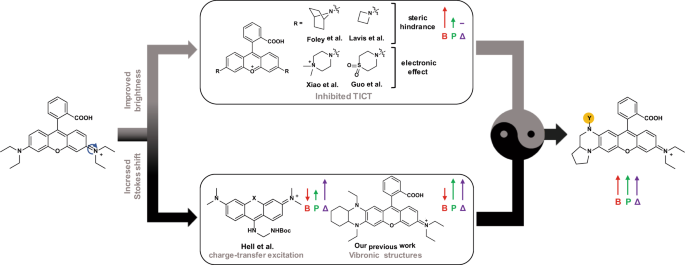A synergistic strategy to improve dyes for nanoscopy
Published in Chemistry
Stimulated Emission Depletion (STED) microscopy, as a super-resolution nanoscopy that breaks the diffraction limit of light, offers a powerful tool to investigate cellular biology on a molecular scale. However, the high-powered depletion laser beam in STED imaging causes severe photobleaching, resulting in more stringent requirements for fluorescent probes. The ideal fluorescent probe for super-resolution imaging should requires several kay properties, such as brightness, photostability, Stokes shift, excitation/emission wavelengths. However, the development of such probes with multiple properties at once is particularly challenging and thus the ideal probe has not yet been reported. Thus, I believe it would be very valuable to provide a strategy to improve fluorophores` multiplexing performance for super-resolution microscopy.
Rhodamine and its derivatives are the popular fluorophores applied in imaging studies due to their exceptional properties, including high brightness, good photostability, and various excitation/emission wavelength. Recently, some strategies have been reported to further improve their properties to further enhance their application in super-resolution microscopy. Suppressing the formation of TICT states can improve the brightness and photostability, while could produce a small Stokes shift (20-30 nm), which often causes self-quenching and low signal-to-noise ratio in fluorescence imaging. Asymmetric fluorophores via introducing alternating vibronic structures can significantly increase the Stokes shift but decrease the brightness of these dyes in aqueous solution.
 Figure 1. The conventional and new strategies to improve the brightness, photostability, and Stokes shift.
Figure 1. The conventional and new strategies to improve the brightness, photostability, and Stokes shift.
To address the above challenge, we tried to combine the TICT inhibition and vibronic structure and developed a new type of asymmetric rhodamines (Yue Lu dyes, abbreviated as YLs). Among these rhodamine derivatives, YL578 with 2-(2,2,2-trifluoroethyl)octahydropyrrolo[1,2-a]pyrazine moiety shows a significantly enhanced brightness, improved photostability, and expanded Stokes shift. YL578-derived probes show excellent performance in wash-free organelles staining and protein labeling in confocal and STED nanoscopy. The success of simultaneously improving several properties of classic fluorophores in this work demonstrated the extraordinary strength of the synergistic strategy, which will boost many new design strategies to create the next generation of fluorophores.

Figure 2. Super-photostable YL578 derivative in 3D and live-cell STED microscopy.
Paper link: https://www.nature.com/articles/s41467-022-29547-3
Follow the Topic
-
Nature Communications

An open access, multidisciplinary journal dedicated to publishing high-quality research in all areas of the biological, health, physical, chemical and Earth sciences.
Related Collections
With Collections, you can get published faster and increase your visibility.
Women's Health
Publishing Model: Hybrid
Deadline: Ongoing
Advances in neurodegenerative diseases
Publishing Model: Hybrid
Deadline: Dec 24, 2025


Please sign in or register for FREE
If you are a registered user on Research Communities by Springer Nature, please sign in